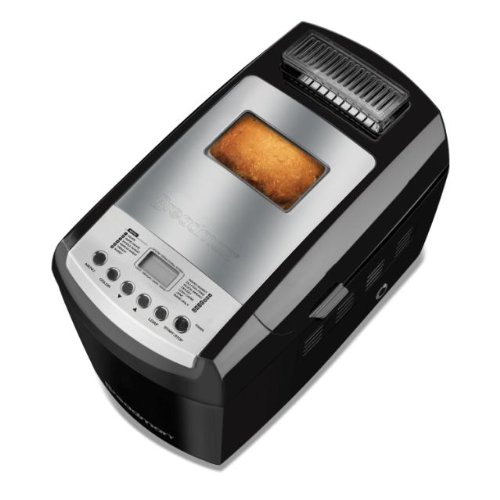For many who want fresh, homemade bread in their kitchens, the prospect of buying a fancy electronic bread maker is an appetizing one. But bread baking purists may argue as to their limitations. In truth, most bread machines do an excellent job, provided you don't intend to ask more of them than they can handle.
Among the most vital elements of making a loaf of bread without using a machine is the hands-on factor - you're handling and examining your dough every step of the way. Depending on various factors like relative humidity, altitude, the variety of yeast you're using, (or its age/health) there may be adjustments you'll need to make as you go along that a bread maker simply cannot take care of... If you simply throw your ingredients into your bread maker and there's something amiss, you might not find out about it until hours later when you open the thing up and find disappointment.
Fortunately, there are a number of 'hands-on' ways to circumvent these kinds of problems with bread makers. Firstly, it's a good idea to test your yeast out before using it in your machine. There are many varieties of yeasts available, and some specifically geared for use in a bread maker. Also, every bread maker you'll find will instruct you to put the ingredients into it in a specific order, primarily in order that the yeast doesn't come into contact with water until the bread maker intends for it to. If the yeast becomes activated before it's supposed to, you could result in too much of a rise that the loaf can't handle, and it'll collapse!
To test your yeast, simply mix some with some water and sugar and watch for a frenzy of activity. Healthy yeast will quickly begin to eat and reproduce - that's their thing.
The other main concern with using bread machines is the kneading-process. When kneading dough by hand, you'll have the opportunity to check to see if the gluten-network (the important structure that keeps bread from collapsing while the yeast does it work to create the rise), is fully formed. While electronic bread makers follow an optimum timing-schedule to ensure that every stage is complete before moving on to the next, (and the good ones even adjust these times based on temperature), it's easy to screw up the gluten-formation by using different flours that require more or less kneading than the machine will perform. Fortunately, the latest bread makers have a variety of settings specific to different common recipes - so you're not necessarily limited to only following a few that you know the bread maker can handle.
Still, there will always be some things that a bread machine simply can't do. However, if you're the type of person who wants to experiment with different bread-recipes on an ongoing basis, then you're probably the sort who'll very much enjoy the extra time and effort required to do it by hand - so the trade-off is a pretty good one either way.
But even if you want a good variety of fresh homemade bread, but don't want to trouble yourself with all the extra work you know an electronic bread maker could be doing for you, there are still quite a lot of different bread recipes specifically designed for use in a bread machine, and any good machine will have a comprehensive instruction manual giving you all the information you'll need to use it properly with many different recipes.
 | Price : $72.77
| Price : $72.77









